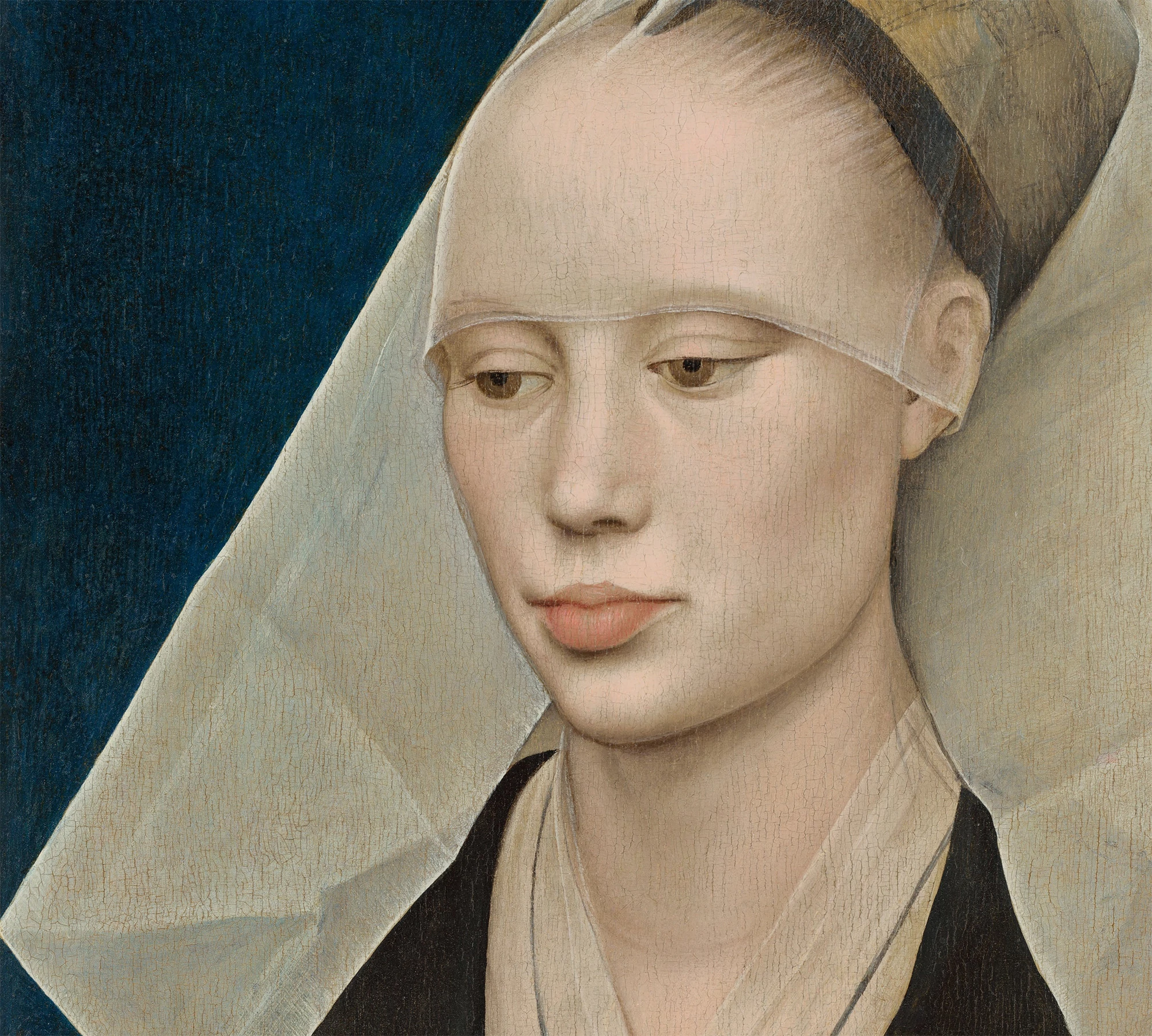Rogier van der Weyden
A master's work erased by war


At 3pm on May 16th, 1940, the air raid sirens in the Belgian city of Tournai began to blare. WWII had arrived in Belgium, in the form of the German Luftwaffe. Dornier Do 17 bombers unloaded massive payloads, and the city erupted in flame.
War is hard on history. The bombing of Tournai destroyed homes and lives, and also erased nearly all records of Rogier van der Weyden. A prolific painter of portraits and religious scenes, what we know of Van der Weyden’s life is pieced together from fragments of civic records. We know that parents were Henri de le Pasture and Agnes de Watrélos, and that he changed his name from Rogelet de le Pasture, to its Flemish form Rogier van der Weyden.
We don't know how Van der Weyden rose to fame. A commission for the ‘Golden Chamber’ of the Brussels City Hall is the first known publication of his new name, and by the middle of the 15th century, it seem Van der Weyden was the most popular painter in the Netherlands. Holding the title of “painter to the town of Brussels” and court painter to the powerful Duke of Burgundy, Van der Weyden eclipsed Robert Campin and Jan van Eyck—the first masters of Early Netherlandish painting. Van der Weyden even took his work international, taking commissions from the French King Philip the Good, and shipping artwork to patrons in France and Spain.
It’s the expressions of his subjects that sets Van der Weyden’s work apart from his contemporaries. Though their postures are stiff, his models feel human. An eyebrow arched or the downcast gaze of a woman lost in thought.
War first touched Van der Weyden’s legacy in 1695 when the French bombardment of Brussels during the Nine Years War destroyed The Justice of Trajan and Herkinbald, the four paneled work commissioned for the Golden Chamber. After the war, Van der Weyden’s work dropped into obscurity. The fires following the bombardment destroyed so much of the city’s records that no single artwork can be attributed to Van der Weyden with full confidence. The works below are those that gallerists and historians currently believe to be by Van der Weyden or his studio.
These paintings are a keyhole peek into the life of one of the Netherlands’ most productive and respected artists, a life scrubbed from history by two terrible wars. War deals death and suffering to the living, but it also erases the stories of the past—the connection to our history, our culture, and what makes us human to begin with.
...
Got questions, comments or corrections about Rogier van der Weyden? Join the conversation in our Discord, and if you enjoy content like this, consider becoming a member for exclusive essays, downloadables, and discounts in the Obelisk Store.